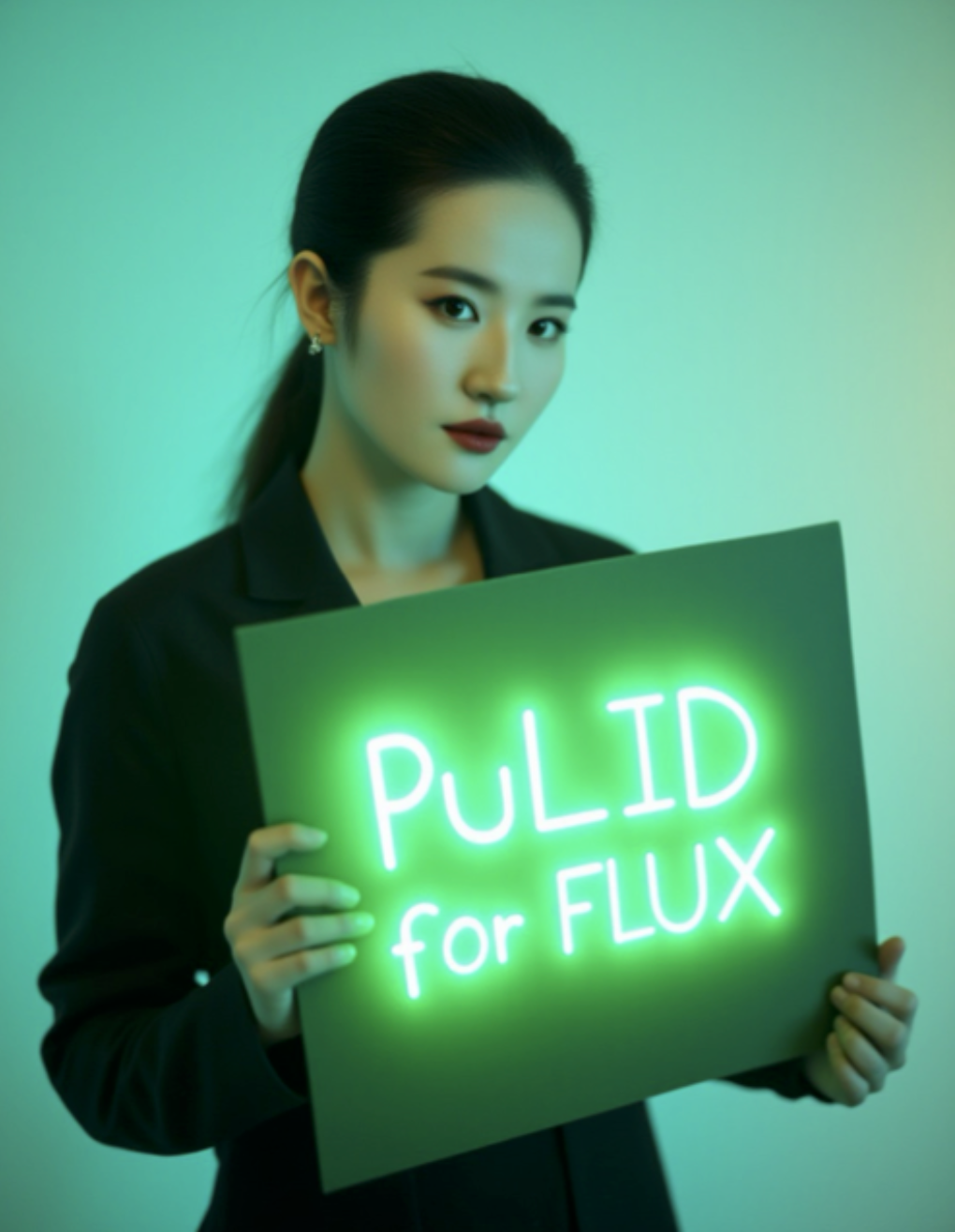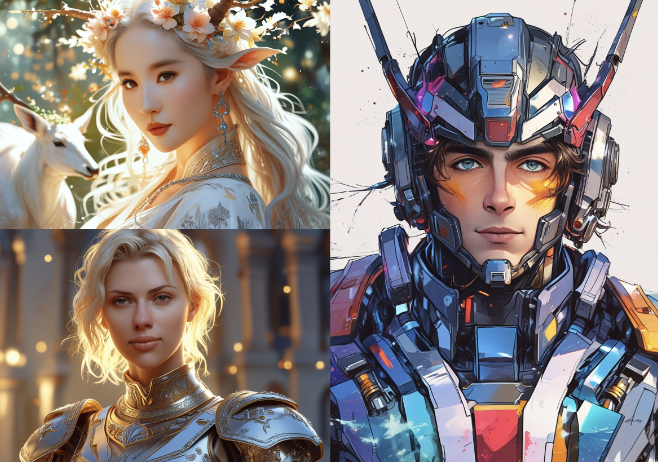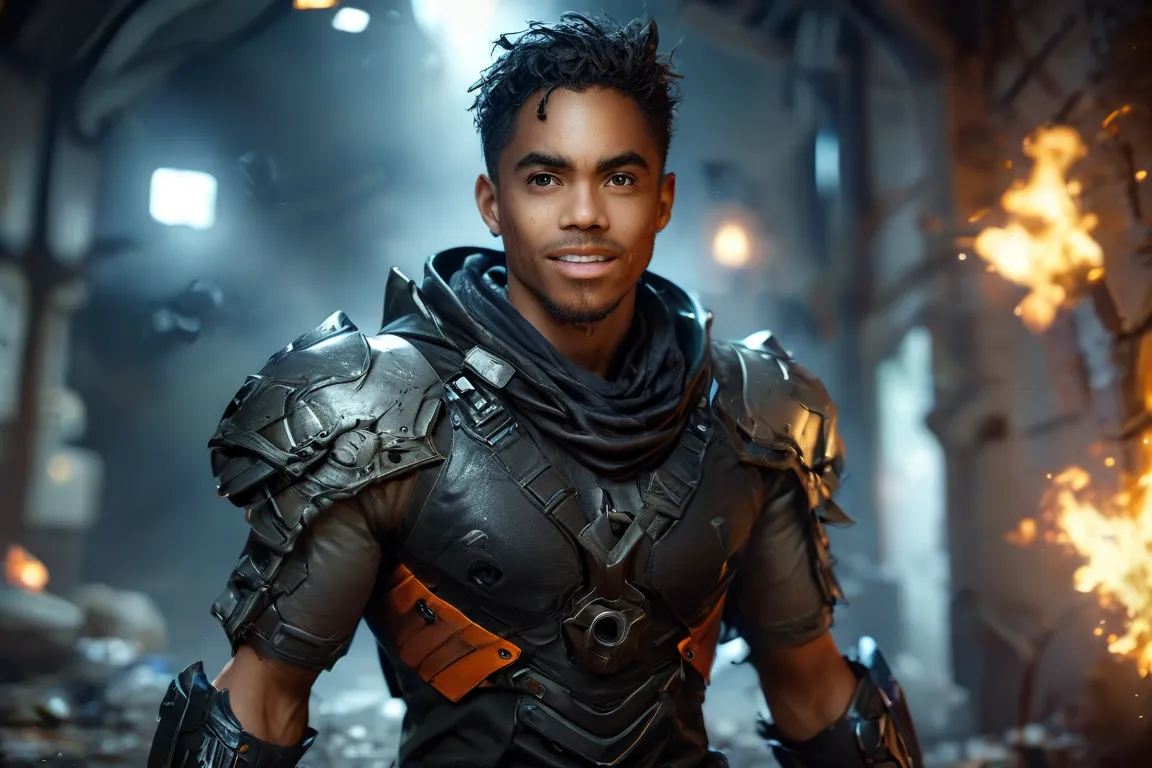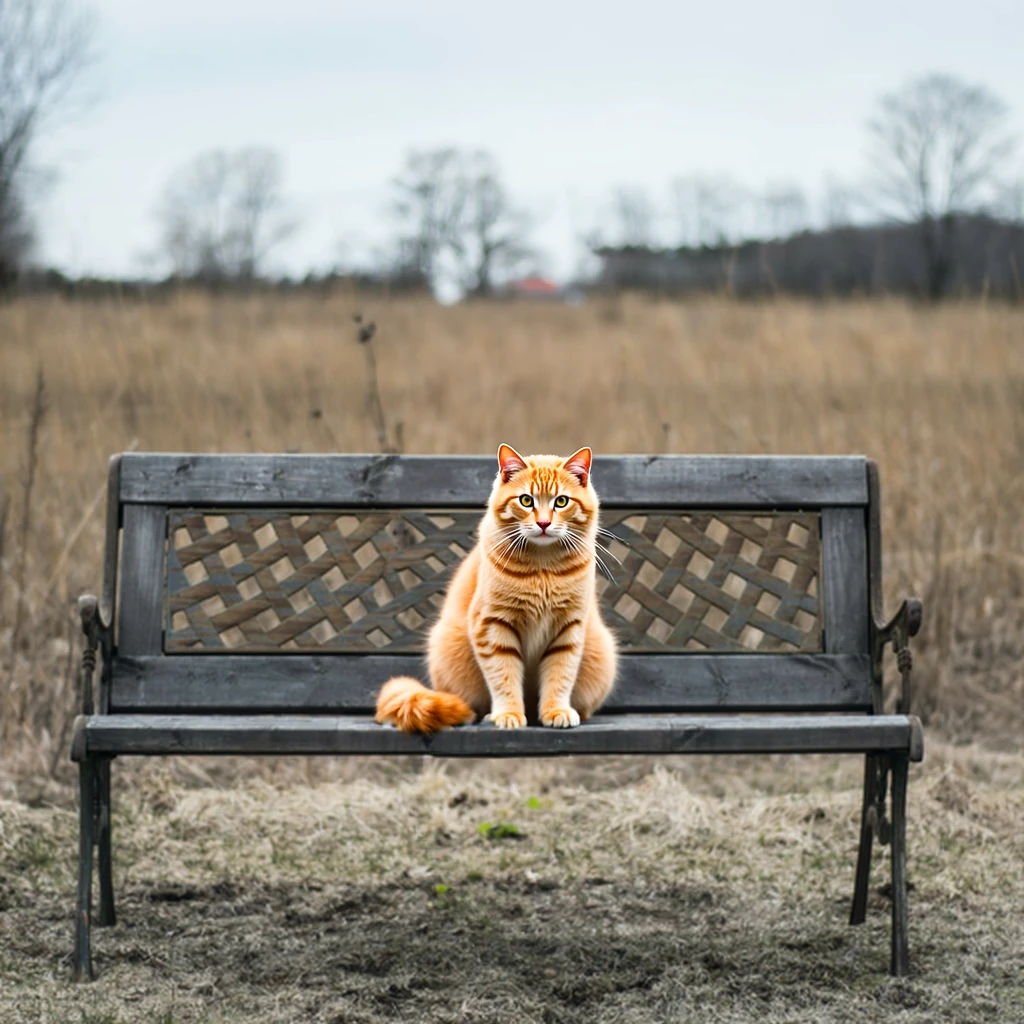flux-pulid
Maintainer: zsxkib

8

| Property | Value |
|---|---|
| Run this model | Run on Replicate |
| API spec | View on Replicate |
| Github link | View on Github |
| Paper link | View on Arxiv |
Create account to get full access
Model overview
flux-pulid is a powerful AI model developed by zsxkib that builds upon the FLUX-dev framework. It combines the capabilities of Pure and Lightning ID Customization with Contrastive Alignment to enable highly customizable and high-quality image generation. This model is closely related to PuLID, which uses a similar approach, as well as other FLUX-based models like SDXL-Lightning and FLUX-dev Inpainting.
Model inputs and outputs
The flux-pulid model takes a variety of inputs to guide the image generation process, including a text prompt, seed, image dimensions, and various parameters to control the style and quality of the output. The model can generate high-resolution images in a range of formats, such as PNG and JPEG.
Inputs
- Prompt: The text prompt that describes the desired image
- Seed: A random seed value to ensure consistent generation
- Width/Height: The desired dimensions of the output image
- True CFG Scale: The weight of the text prompt in the generation process
- ID Weight: The influence of an input face image on the generated image
- Num Steps: The number of denoising steps to perform
- Start Step: The timestep to start inserting the ID image
- Guidance Scale: The strength of the text prompt guidance
- Main Face Image: An input image to use for face generation
- Negative Prompt: Additional prompts to guide what to avoid in the image
Outputs
- Image: The generated image in the specified format and quality
Capabilities
flux-pulid is capable of generating highly detailed and customizable images based on text prompts. It can seamlessly incorporate facial features from an input image, allowing for the creation of personalized portraits and characters. The model's use of Contrastive Alignment helps to ensure that the generated images closely match the desired style and content, while the FLUX-dev framework enables fast and efficient generation.
What can I use it for?
flux-pulid can be particularly useful for creating unique and expressive portraits, characters, and illustrations. The ability to customize the generated images with a specific face or style makes it a powerful tool for artists, designers, and creative professionals. The model's fast generation speed and high-quality outputs also make it suitable for applications like game development, concept art, and visual storytelling.
Things to try
One interesting aspect of flux-pulid is its ability to generate images with a strong sense of personality and individuality. By experimenting with different facial features, expressions, and styles, users can create a wide range of unique and compelling characters. Additionally, the model's flexibility in handling text prompts, combined with its capacity for fine-tuning, allows for the exploration of diverse visual narratives and creative concepts.
This summary was produced with help from an AI and may contain inaccuracies - check out the links to read the original source documents!
Related Models

pulid

420
PuLID is a powerful text-to-image model developed by researchers at ByteDance Inc. Similar to other advanced models like Stable Diffusion, SDXL-Lightning, and BLIP, PuLID uses contrastive learning techniques to generate high-quality, customized images from textual prompts. Unlike traditional text-to-image models, PuLID has a unique focus on identity customization, allowing for fine-grained control over the appearance of generated faces and portraits. Model inputs and outputs PuLID takes in a textual prompt, as well as one or more reference images of a person's face. The model then generates a set of new images that match the provided prompt while retaining the identity and appearance of the reference face(s). Inputs Prompt**: A text description of the desired image, such as "portrait, color, cinematic, in garden, soft light, detailed face" Seed**: An optional integer value to control the randomness of the generated images CF Scale**: A scaling factor that controls the influence of the textual prompt on the generated image Num Steps**: The number of iterative refinement steps to perform during image generation Image Size**: The desired width and height of the output images Num Samples**: The number of unique images to generate Identity Scale**: A scaling factor that controls the influence of the reference face(s) on the generated images Mix Identities**: A boolean flag to enable mixing of multiple reference face images Main Face Image**: The primary reference face image Auxiliary Face Image(s)**: Additional reference face images (up to 3) to be used for identity mixing Outputs Images**: A set of generated images that match the provided prompt and retain the identity and appearance of the reference face(s) Capabilities PuLID excels at generating high-quality, customized portraits and face images. By leveraging contrastive alignment techniques, the model is able to faithfully preserve the identity and appearance of the reference face(s) while seamlessly blending them with the desired textual prompt. This makes PuLID a powerful tool for applications such as photo editing, character design, and virtual avatar creation. What can I use it for? PuLID can be used in a variety of creative and commercial applications. For example, artists and designers could use it to quickly generate concept art for characters or illustrations, while businesses could leverage it to create custom virtual avatars or product visualizations. The model's ability to mix and match different facial features also opens up possibilities for personalized image generation, such as creating unique profile pictures or avatars. Things to try One interesting aspect of PuLID is its ability to mix and match different facial features from multiple reference images. By experimenting with the "Mix Identities" setting, users can create unique hybrid faces that combine the characteristics of several individuals. This can be a powerful tool for creative expression or character design. Additionally, exploring the various input parameters, such as the prompt, CFG scale, and number of steps, can help users fine-tune the generated images to their specific needs and preferences.
Updated Invalid Date

sdxl-lightning-4step

414.6K
sdxl-lightning-4step is a fast text-to-image model developed by ByteDance that can generate high-quality images in just 4 steps. It is similar to other fast diffusion models like AnimateDiff-Lightning and Instant-ID MultiControlNet, which also aim to speed up the image generation process. Unlike the original Stable Diffusion model, these fast models sacrifice some flexibility and control to achieve faster generation times. Model inputs and outputs The sdxl-lightning-4step model takes in a text prompt and various parameters to control the output image, such as the width, height, number of images, and guidance scale. The model can output up to 4 images at a time, with a recommended image size of 1024x1024 or 1280x1280 pixels. Inputs Prompt**: The text prompt describing the desired image Negative prompt**: A prompt that describes what the model should not generate Width**: The width of the output image Height**: The height of the output image Num outputs**: The number of images to generate (up to 4) Scheduler**: The algorithm used to sample the latent space Guidance scale**: The scale for classifier-free guidance, which controls the trade-off between fidelity to the prompt and sample diversity Num inference steps**: The number of denoising steps, with 4 recommended for best results Seed**: A random seed to control the output image Outputs Image(s)**: One or more images generated based on the input prompt and parameters Capabilities The sdxl-lightning-4step model is capable of generating a wide variety of images based on text prompts, from realistic scenes to imaginative and creative compositions. The model's 4-step generation process allows it to produce high-quality results quickly, making it suitable for applications that require fast image generation. What can I use it for? The sdxl-lightning-4step model could be useful for applications that need to generate images in real-time, such as video game asset generation, interactive storytelling, or augmented reality experiences. Businesses could also use the model to quickly generate product visualization, marketing imagery, or custom artwork based on client prompts. Creatives may find the model helpful for ideation, concept development, or rapid prototyping. Things to try One interesting thing to try with the sdxl-lightning-4step model is to experiment with the guidance scale parameter. By adjusting the guidance scale, you can control the balance between fidelity to the prompt and diversity of the output. Lower guidance scales may result in more unexpected and imaginative images, while higher scales will produce outputs that are closer to the specified prompt.
Updated Invalid Date

pulid-lightning

8
The pulid-lightning model is a text-to-image generation model created by fofr that uses SDXL Lightning checkpoints to instantly generate images from a face. It is similar to other face-based image generation models like sdxl-lightning-4step, pulid-base, and pulid. These models leverage advancements in diffusion-based text-to-image generation to create high-quality images from a prompt and a face image. Model inputs and outputs The pulid-lightning model takes in a variety of inputs to control the image generation process, including a face image, prompt, seed, dimensions, and other configuration options. The model then outputs one or more generated images in the specified format and quality. Inputs face_image**: The face image to use for the generation prompt**: The text prompt describing the desired image seed**: A seed value for reproducibility (random by default) width**: The width of the output image (ignored if a structure image is provided) height**: The height of the output image (ignored if a structure image is provided) face_style**: The style of the face to use (e.g. "high-fidelity") output_format**: The format of the output images (e.g. "webp") output_quality**: The quality of the output images (0-100, with 100 being the highest) negative_prompt**: Things you do not want to see in the image checkpoint_model**: The model checkpoint to use for generation Outputs Output**: An array of generated image URLs Capabilities The pulid-lightning model is capable of generating high-quality images by combining a face image with a text prompt. It can produce diverse and creative images by leveraging the strengths of diffusion-based text-to-image generation. The model is optimized for speed, allowing for rapid image generation. What can I use it for? The pulid-lightning model could be used for a variety of creative applications, such as portrait generation, character design, and content creation. It could be particularly useful for projects that require quickly generating images based on a specific face or style. Potential use cases include game development, virtual avatars, and social media content. Things to try Experiment with different face images and prompts to see the range of outputs the pulid-lightning model can produce. Try providing specific instructions in the prompt, such as the desired age, expression, or clothing, to see how the model incorporates those elements. You can also explore the impact of the seed and other configuration options on the generated images.
Updated Invalid Date

flux-dev-inpainting

18
flux-dev-inpainting is an AI model developed by zsxkib that can fill in masked parts of images. This model is similar to other inpainting models like stable-diffusion-inpainting, sdxl-inpainting, and inpainting-xl, which use Stable Diffusion or other diffusion models to generate content that fills in missing regions of an image. Model inputs and outputs The flux-dev-inpainting model takes several inputs to control the inpainting process: Inputs Mask**: The mask image that defines the region to be inpainted Image**: The input image to be inpainted Prompt**: The text prompt that guides the inpainting process Strength**: The strength of the inpainting, ranging from 0 to 1 Seed**: The random seed to use for the inpainting process Output Format**: The format of the output image (e.g. WEBP) Output Quality**: The quality of the output image, from 0 to 100 Outputs Output**: The inpainted image Capabilities The flux-dev-inpainting model can generate realistic and visually coherent content to fill in masked regions of an image. It can handle a wide range of image types and prompts, and produces high-quality output. The model is particularly adept at preserving the overall style and composition of the original image while seamlessly integrating the inpainted content. What can I use it for? You can use flux-dev-inpainting for a variety of image editing and manipulation tasks, such as: Removing unwanted objects or elements from an image Filling in missing or damaged parts of an image Creating new image content by inpainting custom prompts Experimenting with different inpainting techniques and styles The model's capabilities make it a powerful tool for creative projects, photo editing, and visual content production. You can also explore using flux-dev-inpainting in combination with other FLUX-based models for more advanced image-to-image workflows. Things to try Try experimenting with different input prompts and masks to see how the model handles various inpainting challenges. You can also play with the strength and seed parameters to generate diverse output and explore the model's creative potential. Additionally, consider combining flux-dev-inpainting with other image processing techniques, such as segmentation or style transfer, to create unique visual effects and compositions.
Updated Invalid Date